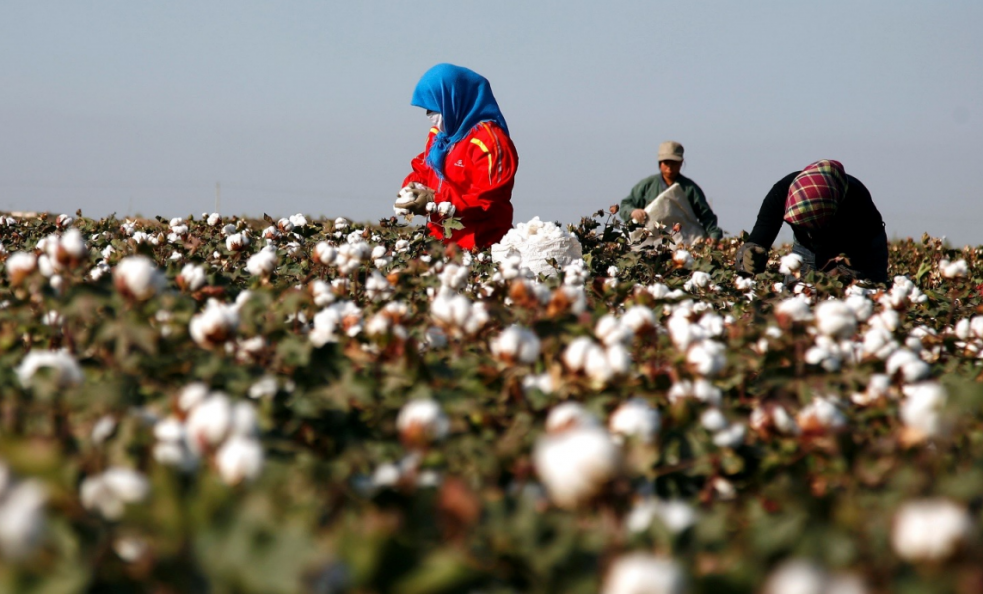Under the influence of macro inflation and continued consumption recovery expectations, commodity prices have surged after the Spring Festival, and the cotton textile industry is still in gradual recovery after the holiday. On Feb 25, Zhengzhou cotton futures market surged again, with the major contract, May contract, breaking through 17,000yuan/mt, then falling slightly. The price increase after the Spring Festival is mainly dominated by macro sentiment. For cotton textile industry, cotton prices also gain support from the small hedging resistance from supply side and favorable inventory status in downstream markets. The following table shows the increment of major cotton textile raw materials since the lowest in 2020 (the lowest point is based on Chinese cotton 3128 price):
Though Xinjiang cotton ginning volumes have risen by 500kt year on year to 5.65 million tons by Feb 24, Chinese cotton consumption recovery is also much higher than anticipated in the post-pandemic period. According to CCFGroup assessment, Chinese cotton consumption is estimated to rise by about 500kt year on year by end Jan in 2020/21 season. Due to the low level in Feb, 2020, caused by the lock-down measures, the yearly increment is larger in Feb, 2021. In 2020/21 season, the Chinese cotton consumption may increase by 1.20 million tons from 2019/20 season. The inventory at small and medium-sized Xinjiang ginning factories has been small before the holiday due to good downstream consumption and tolerable hedging situation. The physical cotton inventory is mostly left in the large traders, and the liquidity is limited, so the hedging resistance is much smaller after the holiday.
After the Spring Festival holiday, transactions are mainly from traders, and the buying interests from spinning mills are in recovery. The purchasing volumes from spinners remain not large this week. 2020/21 cotton imports of China also rise significantly from the same period of last season, so the domestic commercial stocks are higher year on year. But under the higher ZCE cotton futures, on-call cotton is consumed slowly. The liquidity of physical cotton (without on-call cotton) is limited, so the supply of cotton at fixed-price is scarce, and prices move up following the cotton futures. Some spinning mills wait for the allocation of quotas and state cotton auction news.
Downstream cotton yarn and grey fabric sales are improving, and the increment of cotton yarn offers continues to enlarge. Currently, the increment of conventional cotton yarn at 1,000-1,500yuan/mt can be accepted by the buyers, but the trading volumes are not large. With higher cotton yarn prices, grey fabric prices also rise by 0.6yuan/m. Profits for spinners are relatively good, and grey fabric profits also recover somewhat. Fabric mills have not replenished much cotton yarn inventory before the holiday, and downstream plants also purchase not large grey fabric. In addition, in terms of the apparel and fabric inventory in U.S. wholesalers, the inventory is at a low level in recent years, while sales value is rising in recent months. Downstream players have certain replenishment demand with coming buoyant season.

On the whole, the current macro environment dominates the price trend, and the turning point is more dependent on monetary policy and other macro factors. In terms of the industry, cotton prices are easy to rise but hard to decline. Meanwhile, domestic cotton supply is looser than that of US cotton. The cotton inventory is higher than the same period last year. The market is concerned about the allocation of cotton quotas and state cotton auction news. In addition, the domestic cotton market also gains support from the drought condition in cotton growing belts in U.S, expected higher corn and soybean planting areas and favorable U.S. cotton export sales.

CCFgroup: ZCE cotton hikes driven by macro environment, how about fundamentals?
Το περιεχόμενο του άρθρου δεν είναι διαθέσιμο στη γλώσσα που έχετε επιλέξει και ως εκ τούτου το εμφανίζουμε στην αυθεντική του εκδοχή. Μπορείτε να χρησιμοποιήσετε την υπηρεσία Google Translate για να το μεταφράσετε.

